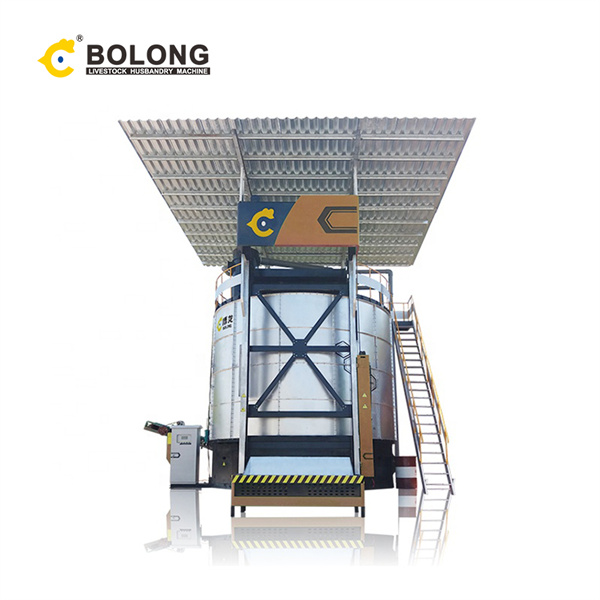
Anaerobic digestion is a sequence of processes by which microorganisms break down biodegradable material in the absence of oxygen. [1] The process is used for industrial or domestic purposes to manage waste or to produce fuels. Much of the fermentation used industrially to produce food and drink products, as well as home fermentation, uses

May 18, 2022 · The attention that high solids anaerobic digestion process (HS-AD) has received over the years, as a waste management and energy recovery process when compared to low solids anaerobic digestion process, can be attributed to its associated benefits including water conservation and smaller digester foot print. However, high solid content of the feedstock involved in the digestion process poses a

Aug 21, 2023 · Polyaluminum chloride (PAC) is used widely and increasingly in wastewater treatment plants, resulting in its inevitably high production in sludge. Previous studies have indicated that the production of short-chain fatty acids (SCFAs) is inhibited by the existence of PAC in sludge anaerobic fermentation, so it is necessary to study how to promote sludge anaerobic fermentation under low

Jun 1, 2021 · Anaerobic granular sludge (AGS) determines the high performance of the bioreactor. To study the regionalization of granular sludge in the bioreactor, a Pilot Spiral Symmetry Stream Anaerobic Bioreactor (P-SSSAB) was established over 216 days, divided into three zones (I, II, and III) from bottom to top.

Waste activated sludge is an important resource rich in carbon and phosphorus. While volatile fatty acids (VFAs) and phosphate can be produced or released into the aqueous phase during anaerobic fermentation, increasing the yield of VFAs and simultaneously recovering phosphate in a fast and economical manner has proven to be challenging.

Jan 1, 2024 · FW is regarded as a good substrate for methane fermentation because of its high methanogenic potential, good biodegradability, and rich nutritional content. Because complex organic components might be degraded, anaerobic fermentation (AF) is more suitable for FW treatment.

Abstract. Conventional anaerobic digestion is an established technology for wastewater stabilization, but methane production rates and net energy yields are generally too low to make the process competitive as a source of methane. Numerous improvements are being developed to make conversion of plant biomass to methane and simultaneous waste

Feb 25, 2024 · Acidogenic fermentation can convert food waste (FW) into small molecules of acids and alcohols, and the broth can be used as a carbon source of denitrification in wastewater treatment plants. However, the soluble nitrogen-containing substances generated in fermentation influence the quality of the carbon source, and microbial nitrogen transformation under different pH conditions has rarely

Mar 11, 2024 · This study explores the mechanism of improving anaerobic fermentation performance of rice samples pretreated by cobalt-60 gamma irradiation through the influence on fermentation substrate, acidogenic phase and methanogenic phase.

Aug 1, 2019 · The experimental setup was composed of two identical dual-chamber MECs to study the effect of urine fermentation by anaerobic digestion on the anode performance of a MEC. MEC A was operated with raw urine (no fermentation) and MEC B was operated with fermented urine. The MECs design used was similar to previously studied MECs [27]. Cellulose

Nov 30, 2022 · This Special Issue will therefore exclusively focus on innovative research outputs, short communications, and perspective reviews on the production of biofuels and high-value biorenewables via anaerobic fermentation to support net neutrality.

Jun 1, 2022 · @article{Pan2022PerformanceOA, title={Performance on a novel rotating bioreactor for dry anaerobic digestion: Efficiency and biological mechanism compared with wet fermentation}, author={Xiaoli Pan and Yuxuan Wang and Haiyin Xie and Hui Wang and Lei Liu and Hongxia Du and Tadayuki Imanaka and Yasuo Igarashia and Fen Luo}, journal={Energy}, year

Mar 7, 2022 · This study demonstrated that Fe 3 O 4 simultaneously improves the total production and formation rate of medium-chain fatty acids (MCFAs) and long-chain alcohols (LCAs) from waste activated sludge (WAS) in anaerobic fermentation.

Oct 1, 2001 · This study was conducted to investigate the performance of the upflow anaerobic sludge blanket (UASB) reactor treating leachate from acidogenic fermenter in the two-phase anaerobic digestion of food waste. The chemical oxygen demand (COD) removal efficiency was consistently over 96% up to the loading rates of 15.8 g COD/l d.

Dec 1, 2022 · DOI: 10.1016/j.biortech.2022.128545 Corpus ID: 255212519; Effect of air mixing on high-solids anaerobic digestion of cow manure: Performance and mechanism. @article{Li2022EffectOA, title={Effect of air mixing on high-solids anaerobic digestion of cow manure: Performance and mechanism.}, author={Xinwei Li and Liangwei Deng and Fucheng Li and Dan Zheng and Hongnan Yang}, journal={Bioresource